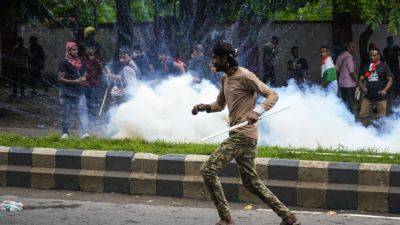Islamic State’s remarkable and terrifying staying power
Austrian authorities announced the arrest of two people on August 7 for planning attacks on large events around Vienna, including Taylor Swift concerts. The suspects, a 19-year-old who was known to security services and a 17-year-old, are Austrian citizens believed to have been radicalized by extremist Islamist propaganda from Islamic State (IS) and Al-Qaeda.
These foiled plans were followed by a knife attack in the west German city of Solingen on August 23 that killed three people and wounded eight others. IS claimed responsibility for the attack the following day.
To understand the message that IS intended to send through these attacks, we must consider how the group operated both at its peak and after its 2019 defeat, when the final stretch of the group’s territory was liberated in Baghuz, Syria.
Between 2014 and 2016, IS gained international media attention for its campaign to establish a so-called Islamic caliphate in Iraq and Syria. The group recruited men and women from over 80 countries and committed atrocities against minorities including Kurds, Shabaks, Christians and Yazidis in the territories across Iraq and Syria that fell under its control.
A global coalition made up of 87 international partners, including countries and organizations like NATO, was established to defeat IS. Once the group had lost control of all of its territory, it saw a significant decrease in media attention.
This decline in coverage occurred despite the enduring and severe consequences of the group’s actions, particularly for ethnic groups like the Yazidis.
Ten years have now passed since IS’s brutal campaign of genocide and sexual enslavement against the Yazidis in Iraq. But around 150,000 survivors still live in tents in displaced







